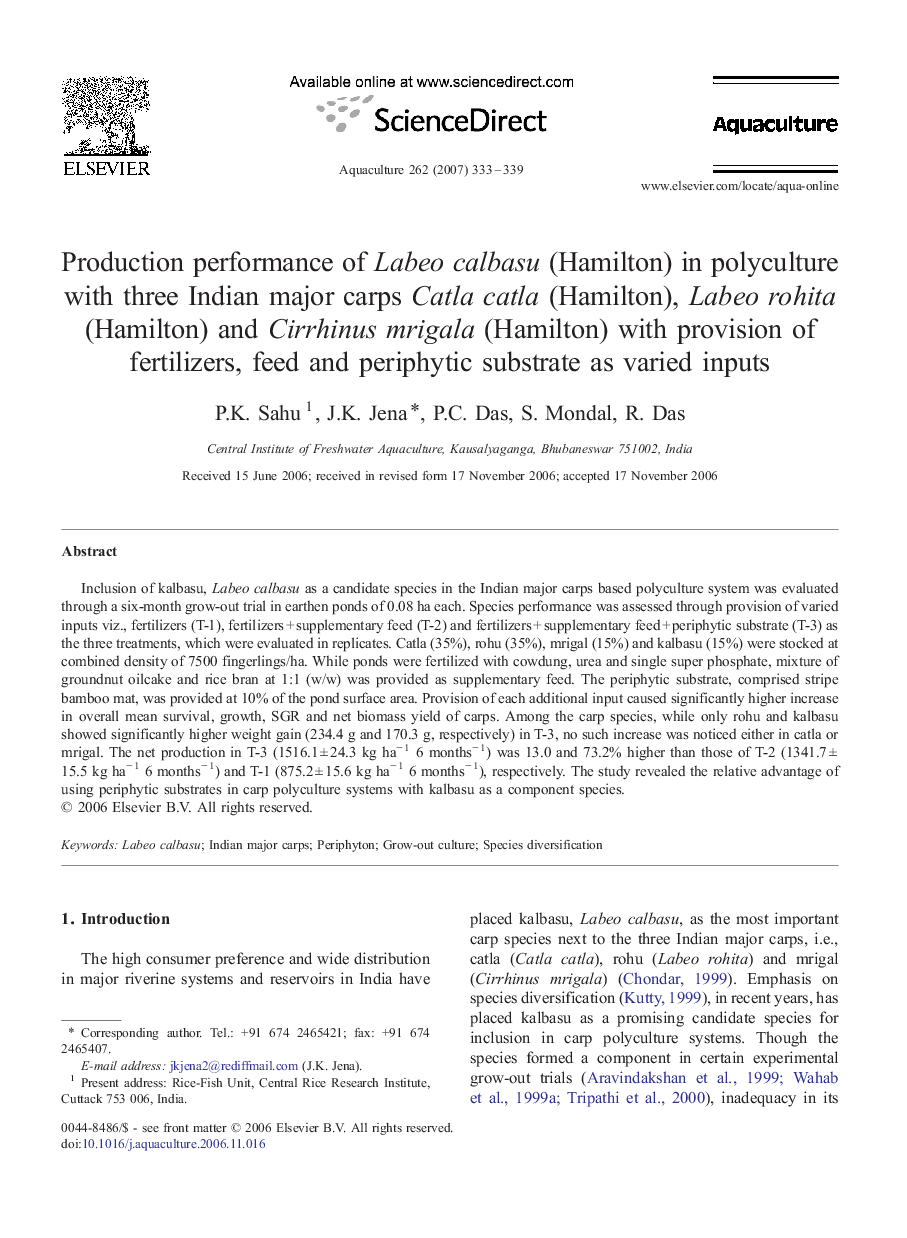| کد مقاله | کد نشریه | سال انتشار | مقاله انگلیسی | نسخه تمام متن |
|---|---|---|---|---|
| 2425328 | 1552980 | 2007 | 7 صفحه PDF | دانلود رایگان |

Inclusion of kalbasu, Labeo calbasu as a candidate species in the Indian major carps based polyculture system was evaluated through a six-month grow-out trial in earthen ponds of 0.08 ha each. Species performance was assessed through provision of varied inputs viz., fertilizers (T-1), fertilizers + supplementary feed (T-2) and fertilizers + supplementary feed + periphytic substrate (T-3) as the three treatments, which were evaluated in replicates. Catla (35%), rohu (35%), mrigal (15%) and kalbasu (15%) were stocked at combined density of 7500 fingerlings/ha. While ponds were fertilized with cowdung, urea and single super phosphate, mixture of groundnut oilcake and rice bran at 1:1 (w/w) was provided as supplementary feed. The periphytic substrate, comprised stripe bamboo mat, was provided at 10% of the pond surface area. Provision of each additional input caused significantly higher increase in overall mean survival, growth, SGR and net biomass yield of carps. Among the carp species, while only rohu and kalbasu showed significantly higher weight gain (234.4 g and 170.3 g, respectively) in T-3, no such increase was noticed either in catla or mrigal. The net production in T-3 (1516.1 ± 24.3 kg ha− 1 6 months− 1) was 13.0 and 73.2% higher than those of T-2 (1341.7 ± 15.5 kg ha− 1 6 months− 1) and T-1 (875.2 ± 15.6 kg ha− 1 6 months− 1), respectively. The study revealed the relative advantage of using periphytic substrates in carp polyculture systems with kalbasu as a component species.
Journal: Aquaculture - Volume 262, Issues 2–4, 28 February 2007, Pages 333–339